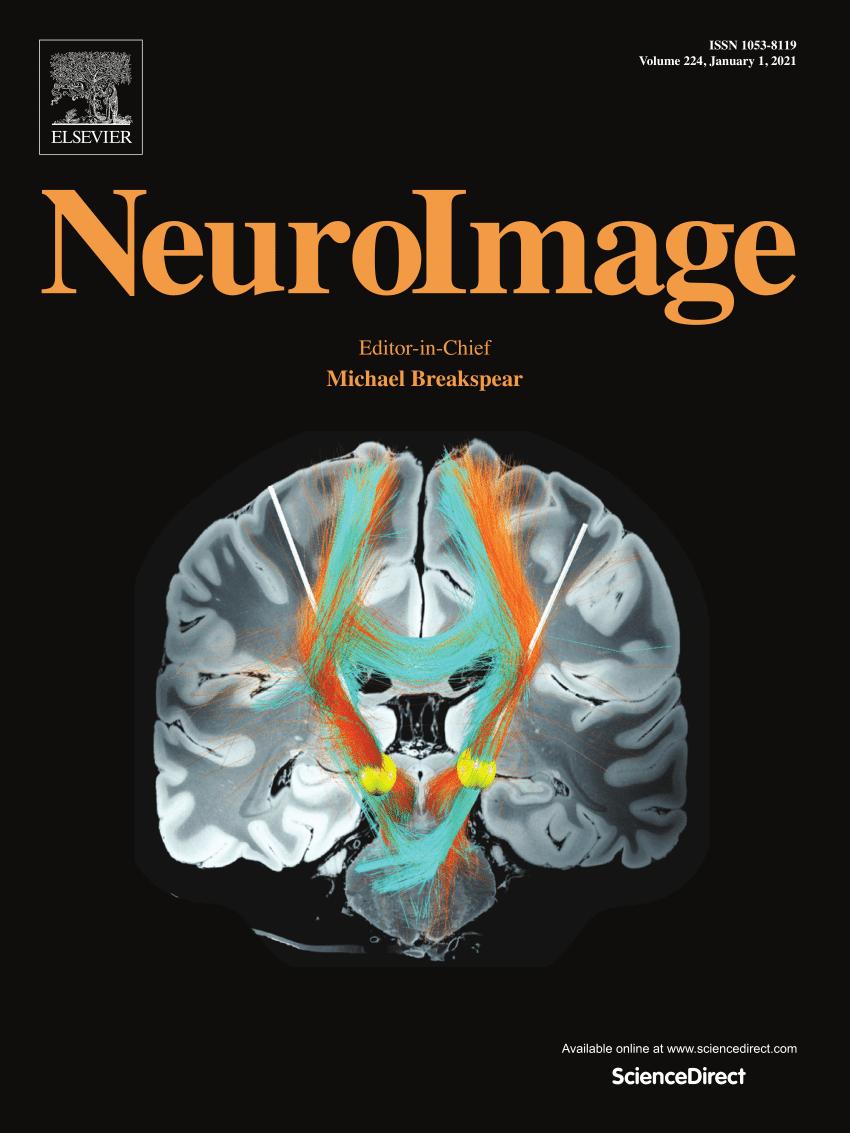Reweighting of visuomotor areas during motor processing subsequent to somatosensory cortical damage
IF 4.5
2区 医学
Q1 NEUROIMAGING
引用次数: 0
Abstract
Somatosensory inputs are critical to motor control. Animal studies have shown that primary somatosensory lesions cause sensorimotor deficits along with disrupted organization in primary motor cortex (M1). How does damage in primary somatosensory cortex (S1) influence motor networks in humans? Using fMRI, we examined two individuals, LS and RF, who had extensive damage to left somatosensory cortex, but primarily intact motor cortex and preserved motor abilities. Given left S1 damage, tactile detection and localization were impaired for the contralesional hand in both individuals. When moving the contralesional hand, LS, with near complete damage to S1 hand area, showed increased activation in ipsilesional putamen and deactivation in contralesional cerebellum relative to age-matched controls. These findings demonstrate influences of S1 damage to subcortical sensorimotor areas that are distant from the lesion site, and a potential reweighting of the motor network with increased action selection in putamen and inhibition of sensory prediction in cerebellum in the face of sensory loss. In contrast, RF, who had a small island of spared S1 in the hand area, showed greater activation in contralesional S1 for movement versus rest. This same region was also activated by pure somatosensory stimulation in a second experiment, suggesting that the spared S1 area in RF still subserves sensorimotor processing. Finally, the right middle occipital gyrus was more strongly activated in both individuals compared with controls, suggesting the potential reliance on visual imagery in the face of degraded sensory feedback.
体感觉皮质损伤后运动加工过程中视觉运动区域的重加权
体感输入对运动控制至关重要。动物研究表明,原发性体感觉损伤导致感觉运动缺陷,并伴有原发性运动皮层(M1)组织紊乱。初级体感觉皮层(S1)的损伤如何影响人类的运动网络?使用功能磁共振成像,我们检查了两个个体,LS和RF,他们有广泛的左侧体感觉皮层损伤,但主要是完整的运动皮层和保留的运动能力。在左S1损伤的情况下,两个人对侧手的触觉检测和定位受损。当运动对侧手时,与年龄匹配的对照组相比,S1手区几乎完全损伤的LS患者,同侧壳核激活增加,对侧小脑失活。这些发现表明S1损伤对远离病变部位的皮质下感觉运动区域的影响,以及面对感觉丧失时壳核动作选择增加和小脑感觉预测抑制的运动网络的潜在重加权。相比之下,RF在手部区域有一个小的备用S1岛,在运动时比休息时显示出更大的对侧S1激活。在第二个实验中,该区域也被纯粹的体感觉刺激激活,这表明RF中空闲的S1区域仍然支持感觉运动加工。最后,与对照组相比,两个人的右枕中回都被更强烈地激活,这表明在面对退化的感觉反馈时,可能依赖于视觉图像。
本文章由计算机程序翻译,如有差异,请以英文原文为准。
求助全文
约1分钟内获得全文
求助全文
来源期刊

NeuroImage
医学-核医学
CiteScore
11.30
自引率
10.50%
发文量
809
审稿时长
63 days
期刊介绍:
NeuroImage, a Journal of Brain Function provides a vehicle for communicating important advances in acquiring, analyzing, and modelling neuroimaging data and in applying these techniques to the study of structure-function and brain-behavior relationships. Though the emphasis is on the macroscopic level of human brain organization, meso-and microscopic neuroimaging across all species will be considered if informative for understanding the aforementioned relationships.
 求助内容:
求助内容: 应助结果提醒方式:
应助结果提醒方式:


